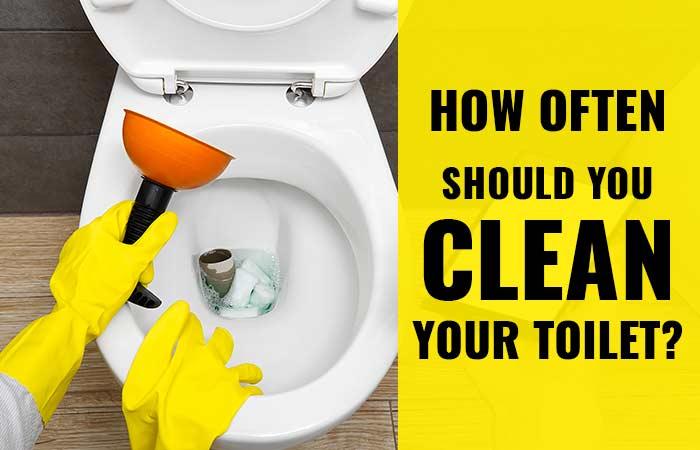How often you should clean your toilet — and the right way to do it
Whether you call it “the can” or “the commode,” a toilet by any name can stink.
Despite being the most popular seat in the house, the toilet rarely gets the cleaning it deserves. Who better to teach us the right way to clean it than Leslie Reichert? The Queen of the Throne specialized in bathrooms when she ran her cleaning business.
Find out how you should really be cleaning your toilet
April 26, 201600:59RELATED: Start scrubbing and dusting! Spring clean with these room-by-room tips
“I’ve cleaned over 11,000 toilets in my life," she admits, and now she's teaching us her ways.
The tools:
Pinned on Pinterest.How to clean inside the toilet bowl
Once a week: For a thorough weekly cleaning, turn off the water to the toilet and flush so all the water empties out of the bowl. Sprinkle the toilet cleaning powder into the toilet bowl and, wearing gloves, scrub the bowl and under the rim using a scrubby sponge. Add 1 cup of distilled white vinegar to the toilet after scrubbing with the powder. Allow this to sit for an hour, if possible, before turning on the water and flushing. Now you have one clean toilet!

Daily: To extend the effects of the weekly cleaning, swish the toilet bowl every day using plain water and a toilet brush. This is a maintenance tip only. It doesn’t replace the weekly cleaning regimen.
Does your toilet have more rings than a punk rocker? Remove stains and rings using a pumice stone. (Nothing does it better once you get over being up close and personal with a toilet.) Do this chore during the once-a-week cleaning when the bowl is empty. Wearing your rubber gloves, sprinkle toilet cleaning powder on the stains/rings, then use the pumice stone and a little bit of elbow grease to scrub them away.
Pinned on Pinterest.RELATED: How to clear the clutter from your nightstand
How to clean the outside of the toilet
Every week, clean the entire outside of the toilet. Using a damp microfiber cloth that’s been folded into eighths, start wiping at the top of the tank and work down. You’ll be using only an eighth of the cloth at a time. Wipe in this order, folding to a fresh portion of the cloth after each step:
Technically, the floor around the toilet is not the toilet, but we all know what lurks there. (If you have boys in the house, you know what I mean.) There are products on the market (enzyme-based Urine Off and probiotic-based Chrisal) that consume urine from surfaces and eradicate the odor. These work best on fresh urine spills as opposed to a year’s worth of urine build-up.
Toilet tank: When slime is obvious in the toilet tank, it’s time to clean it. According to Doyle James, president of Mr. Rooter Plumbing, the best way to clean it is: drain the tank by turning off the water valve below the tank and flushing the toilet. Apply an all-purpose cleaner, like Reichert’s DIY version, to the inside of the tank. Let this sit for 10-15 minutes before scrubbing with a toilet brush, old toothbrush or scrubby sponge. Turn water on and flush.
RELATED: 3 tips to organize the cabinet under the sink once and for all
Cleaning the tools of the trade — like the toilet brush
Because of the bacteria involved, Reichert says bathroom cleaning cloths should go straight into the washer. Wash separately in hot water and detergent after each use. Do not add fabric softener, it ruins microfiber. Air dry.
Toilet brush and holder: Every two weeks, mix 2 ounces of distilled white vinegar, a few drops of tea tree oil and a few drops of essential oil, like lemongrass or lavender. Pour some on the toilet brush and add the rest to the brush holder to keep it smelling fresh. Replace this mixture every two weeks.
To clean the toilet plunger (as needed, of course), let it sit a few minutes in the toilet with the cleaning solution. Rinse. Dry it by lifting the plunger out of the water. Keep it suspended over the toilet but out of the water by closing the toilet seat on top of the plunger handle. When the plunger is dry, it’s ready to be stored.
Pinned on Pinterest.This article was originally published April 26, 2016.








